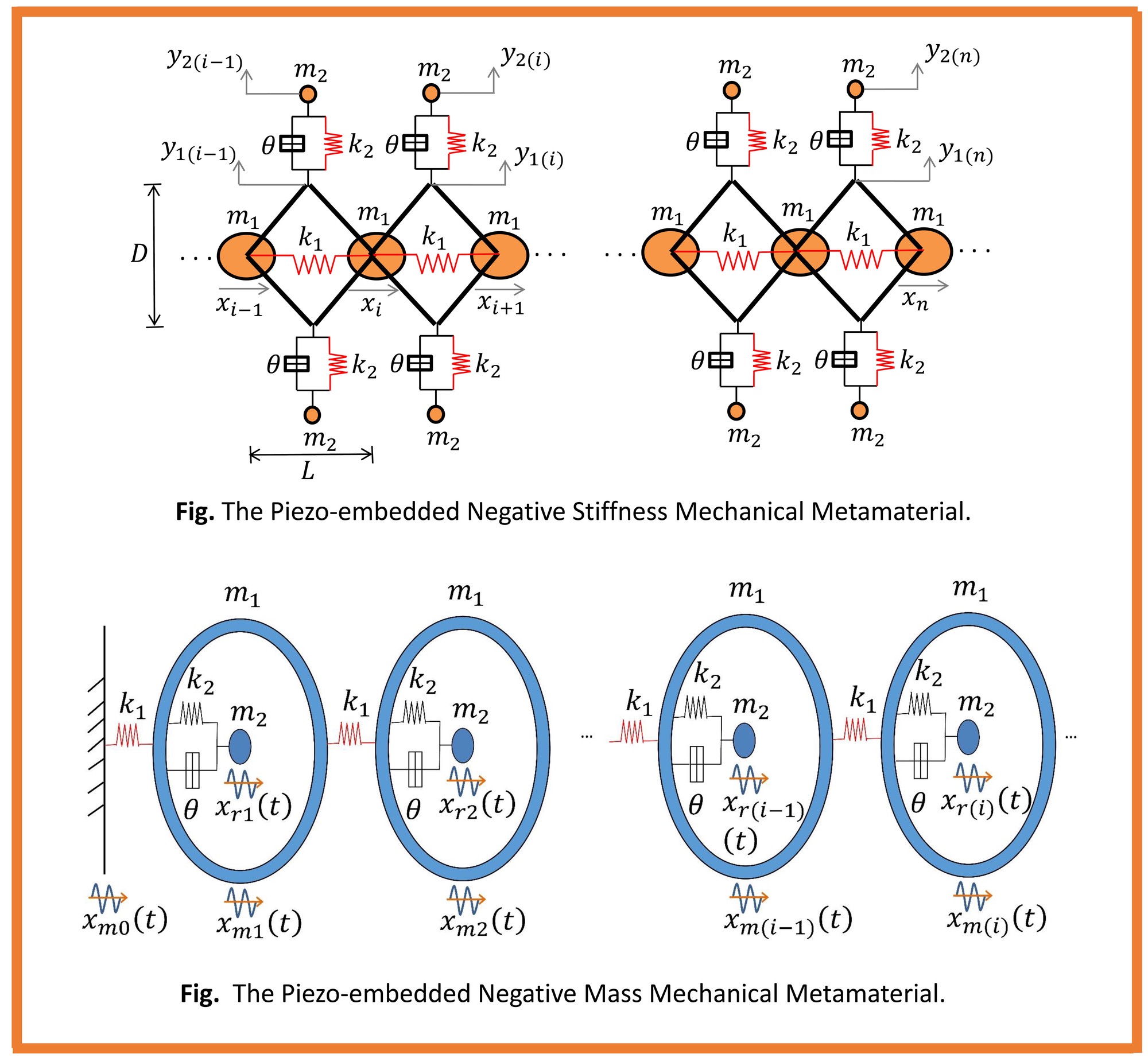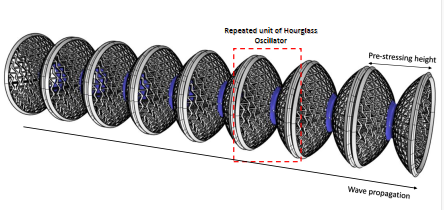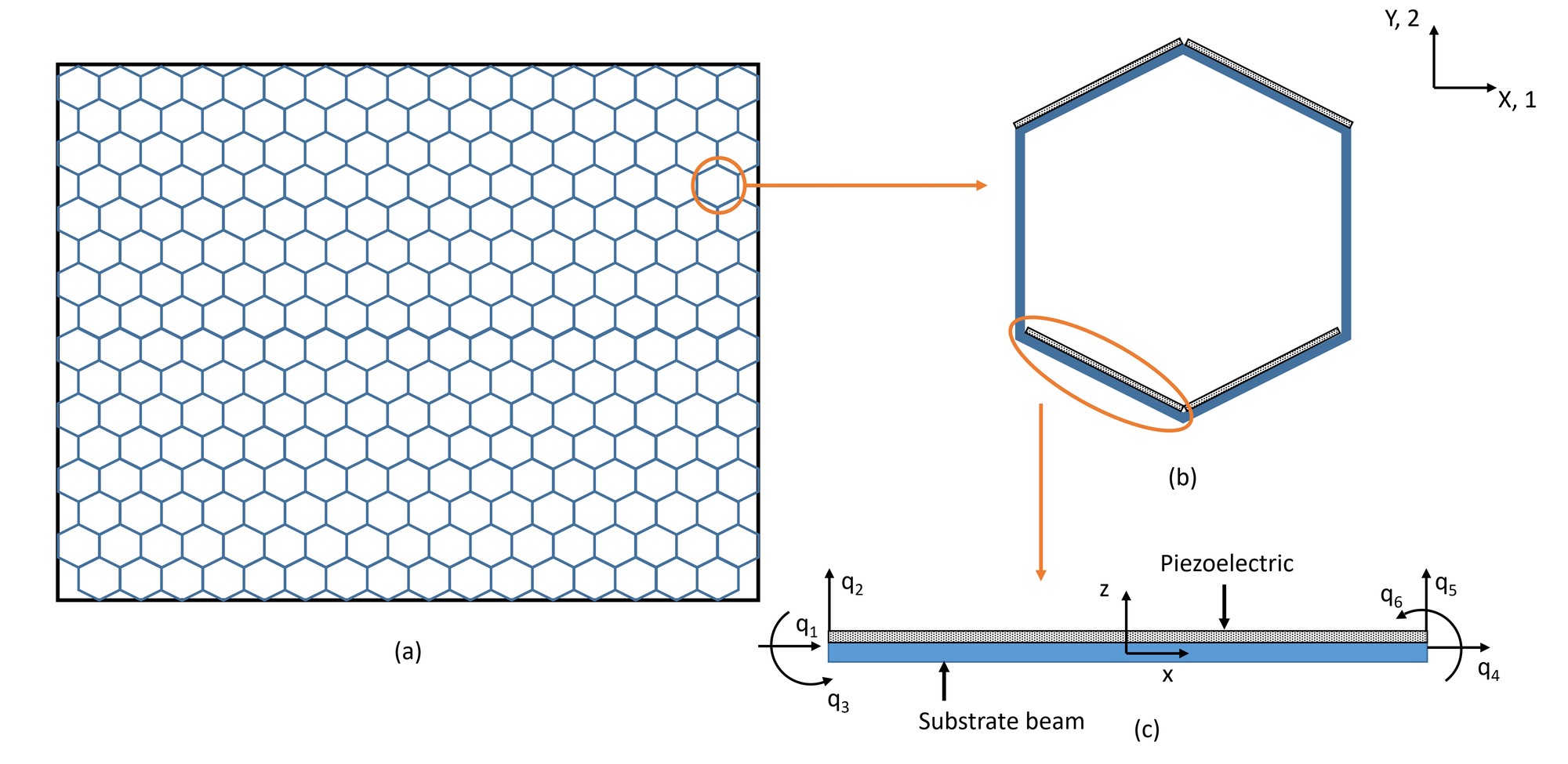Metastructures & Metamaterials
1. Dual Functional Metamaterials and Metastructures for Energy Harvesting and Vibration Control
The dynamics of periodic materials and structures have a profound historic background starting from Newton’s first effort to find sound propagation in the air to Rayleigh’s exploration of continuous periodic structures. This field of interest has received another surge from the early 21st century. Elastic mechanical metamaterials are the exemplars of periodic structures that exhibit interesting frequency-dependent properties like negative Young’s modulus and negative mass in a specific frequency band due to additional feature of local resonance. It implies, the spatial periodicity of mechanical unit cells in engineered metamaterials exhibits properties beyond one can expect from conventional naturally occurring materials. Locally resonant units in the designed metamaterial facilitate bandgap formation virtually at any frequency for wavelengths much higher than the lattice length of a unit cell. Whereas at higher frequencies for wavelengths equal to the lattice size of the medium, the Bragg scattering phenomenon occurs, which also helps in the bandgap formation. Read more…

2. Exploring the dynamics of hourglass shaped lattice metastructures
Continuous demand for the improvement of mechanical performance of engineering structures pushes the need for metastructures to fulfil multiple functions. Extensive work on lattice-based metastructure has shown their ability to manipulate wave propagation and producing bandgaps at specific frequency ranges. Enhanced customizability makes them ideal candidates for multifunctional applications. This paper explores a wide range of nonlinear mechanical behavior that can be generated out of the same lattice material by changing the building block into dome shaped structures which improves the functionality of material significantly. Read more…

3. Metamaterial inspired tensairity beam for frequency band attenuation
Tensairity refers to a class of lightweight structure which has a wide range of interesting applications such as temporary bridges, inflatable kites, of unmanned aerial vehicle wings and mainsail in sailing boats. A Tensairity structure has three main components, namely tension element, compression element and air beam. The primary purpose of the air beam is to stabilise the compression element under loading. The combination of these elements results in a structure which has lightweight compared to conventional structures for the same strength and vice versa. In this study, we explore a new concept of meta tensairity beam. Read more…

4. Voltage modulated elastic moduli in lattice metamaterials
Two-dimensional lattices are ideal candidate for developing artificially engineered materials and structures across different length-scales, leading to unprecedented multi-functional mechanical properties which can not be achieved in naturally occurring materials and systems. Characterization of effective elastic properties of these lattices is essential for their adoption as structural elements of various devices and systems. All the parameters that control the effective elastic properties are passive in nature. After manufacturing the lattice structure with a certain set of geometric or material-based parameters, there is no room to modulate the properties further. In this article, we propose a hybrid lattice micro-structure by integrating piezo-electric materials with the members of the lattice for active voltage-dependent modulation of elastic properties. A bottom-up multi-physics based analytical framework leading to closed-form formulae is derived for hexagonal lattices to demonstrate the concept of active lattices. Read more…
